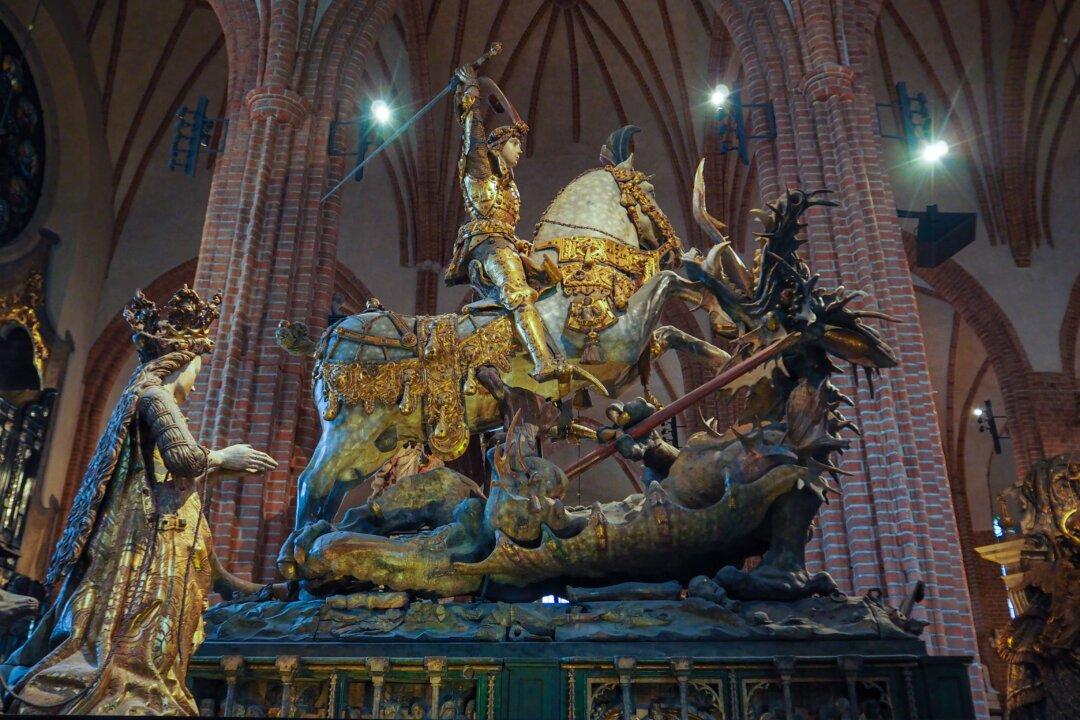The artworld is awash with nontraditional art. Refreshingly, independent art scholar and critic Michelle Marder Kamhi offers us an honest look at the artworld through the lens of traditional art in her book “Bucking the Artworld Tide: Reflections on Art, Pseudo Art, Art Education & Theory.” Kamhi’s enthusiastic mission to defend traditional art may compel many to grab an oar and join her in her boat against the tide.

Art critic and scholar Michelle Marder Kamhi, 2014. Helene Glanzberg
The book, Kamhi says on the book cover, is a prequel and sequel to her book “Who Says That’s Art? A Commonsense View of the Visual Arts.”
Kamhi champions traditional art in an artworld that she says is almost submerged by a “virtual tsunami of anti-traditional work and supporting critical spin generated by the contemporary artworld.” Such a deluge she likens to Katsushika Hokusai’s “Great Wave off Kanagawa” (as seen on the book cover). Kamhi suggests that the small boats depicted in the painting are full of traditional art advocates battling against that tremendous, contemporary artworld tide.

Michelle Marder Kamhi's new book.
In the new book’s preface, Kamhi shares “the view aptly expressed by the critic and art historian John Canaday (1907–1985) that art is ‘the tangible expression of the intangible values men live by.’“ She continues: ”Throughout my work, I have sought to show how works of genuine art fulfill that essential function, while the contemporary work that dominates today’s artworld (I call it “pseudo art”) largely fails to do so. In addition, I have aimed to explain why such expressions are important for both individuals and society.”
Kamhi’s book will appeal to anyone who wants to understand more about art and why today’s art is so radically different from the predominant representational art of the past.
Curated Content
The book is a carefully chosen selection of Kamhi’s work spanning three decades, and many were articles written for the art journal Aristos, where she has been associate editor from 1984–1992 and co-editor since 1992.Divided into four parts, the book covers “Art & Pseudo Art,” “Abstract Art,” “Art Education,” and “Art Theory.” Each article in a section offers a standalone look at an aspect of the topic, rather than being a chapter to be read as a whole from start to finish. Kamhi includes extensive footnotes for each essay, and each image mentioned can be accessed online to view while reading, which is a thoughtful touch.
Kamhi says that a key component of the book is her critique of K–12 art education, mainly covered in the “Art Education” section. Everyone should read this section—even if you’ve long left the education system or your children have long-flown the nest. It’s a chance to decontaminate ourselves of agenda-driven art classes. One point is how American art classrooms have been infiltrated by social justice agendas that have nothing to do with art. For instance, in “The Hijacking of Art Education,” Kamhi writes: “The social justice theme in art education is intricately linked to ‘critical theory’—and, more particularly, to what is called ‘critical pedagogy.’ These methodologies derive from the Marxist-inspired approach to philosophic and social analysis known as the Frankfurt School.”
Accessible Art
“Bucking the Artworld Tide” is written in such a way that makes it accessible to anyone who is curious about art. Part of the joy of reading Kamhi’s work is that she preempts and answers those niggling questions we have. In her essay “The Undefining of Art and Its Consequences,” Kamhi asks: “How did we get to the point where people of normal intelligence cannot begin to understand the art of our own time without expert help?”Throughout the book, Kamhi answers such questions with eloquent discourse, communicating her arguments so clearly (and with humor) that it is easy to forget she’s often tackling complex ideas. And oftentimes she attempts to make sense of nonsensical modernist or post-modernist art (that even the artists admit have no meaning), which is no easy feat.
This book is important in understanding and protecting our traditional Western art heritage. In her essay titled “R.H. Ives Gammell,” she quotes the perhaps prophetic words of the Boston painter from his book “Twilight of Painting” that was published in 1946:
“The ultimate importance of Modern Painting in the history of art will be seen to lie in the fact that it discredited and virtually destroyed the great technical traditions of European painting, laboriously built up through the centuries by a long succession of men of genius. The loss of these traditions has deprived our potential painters of their rightful heritage, a heritage without which it will be impossible for them to give full scope to such talent as they may possess.”
Traditional art, it seems, has not been lost in the contemporary art whirlpool just yet. If more guardians of traditional art like Kamhi step forward, then surely the artworld tide can be bucked.“Bucking the Artworld Tide: Reflections on Art, Pseudo Art, Art Education & Theory”
Michelle Marder Kamhi
Pro Arte Books
380 pages; paperback






